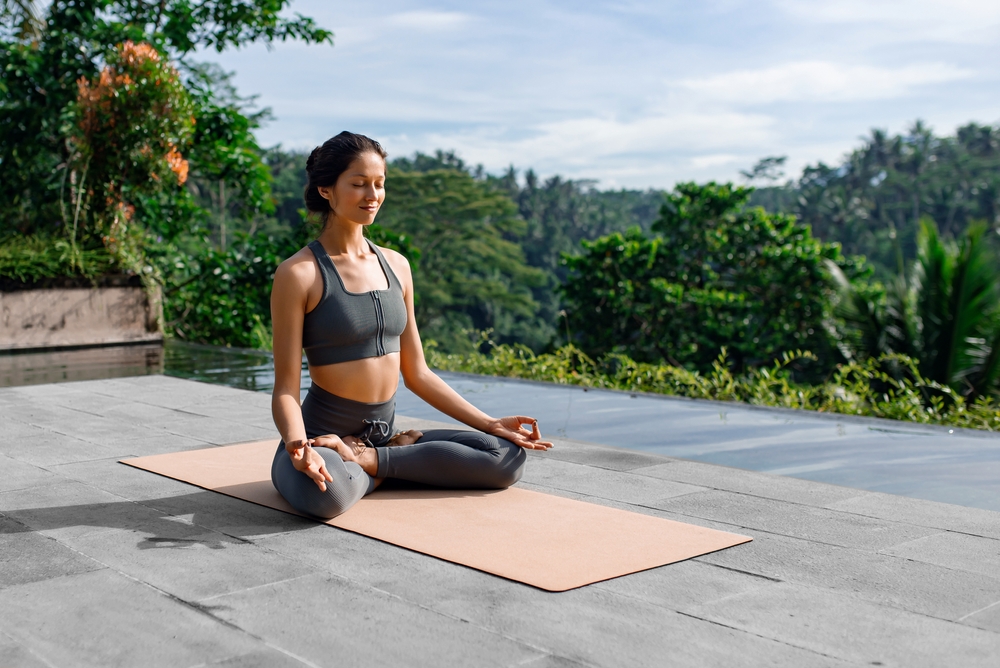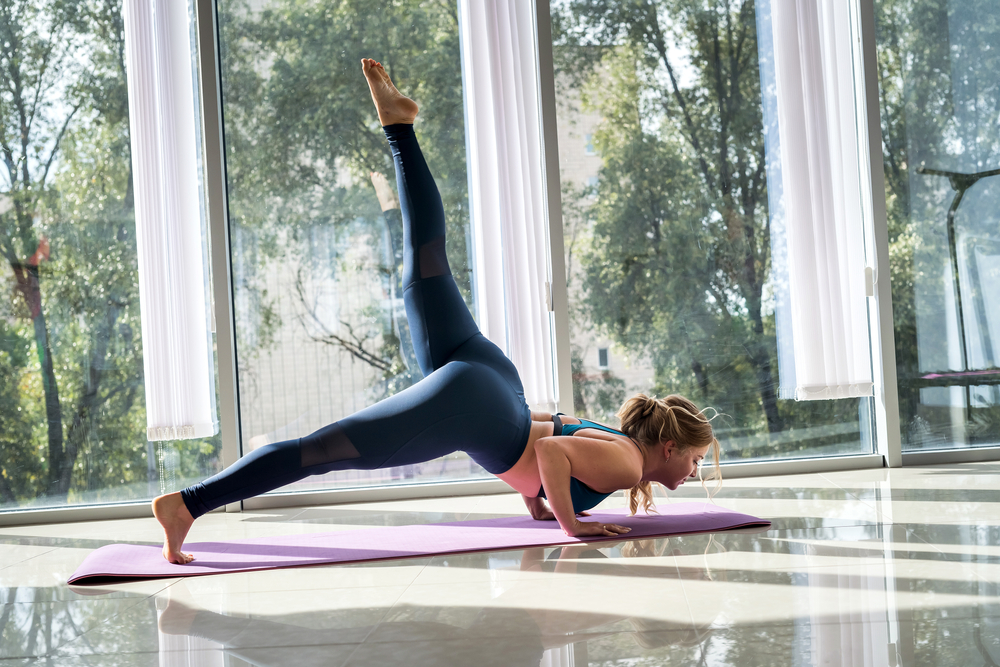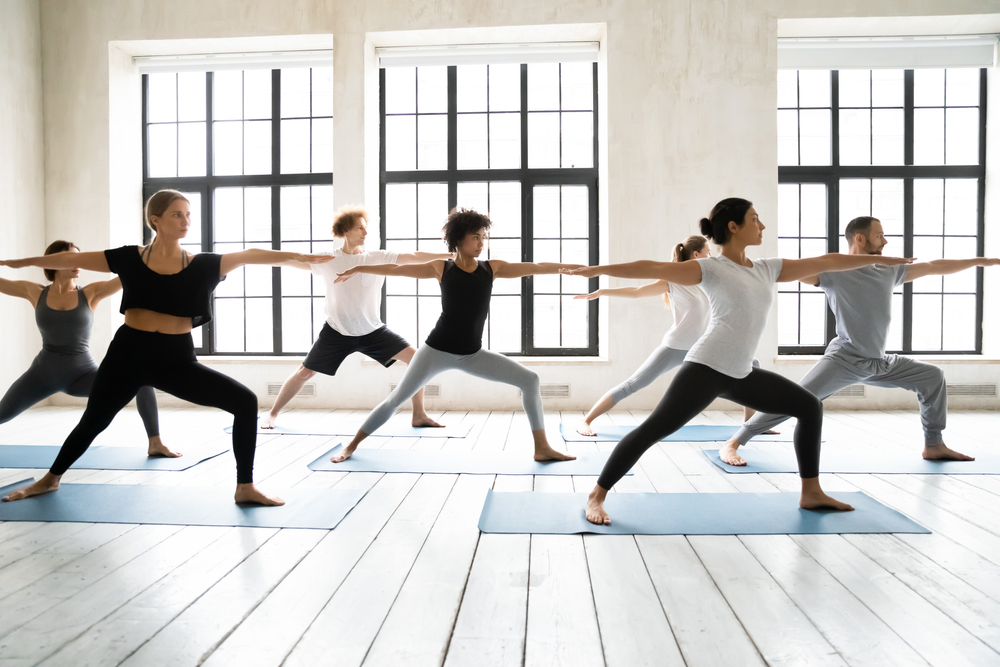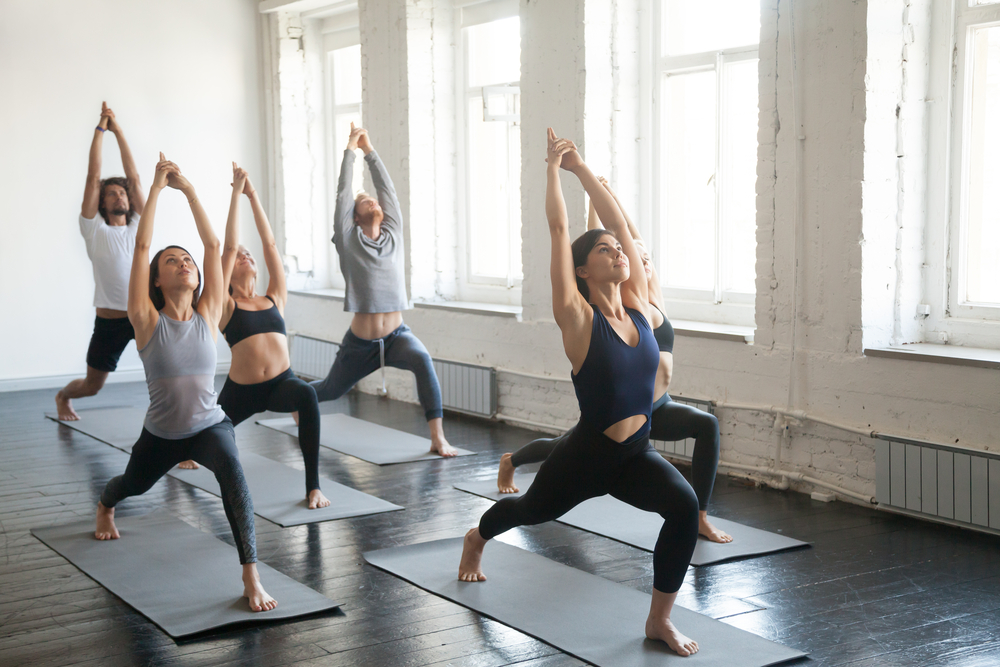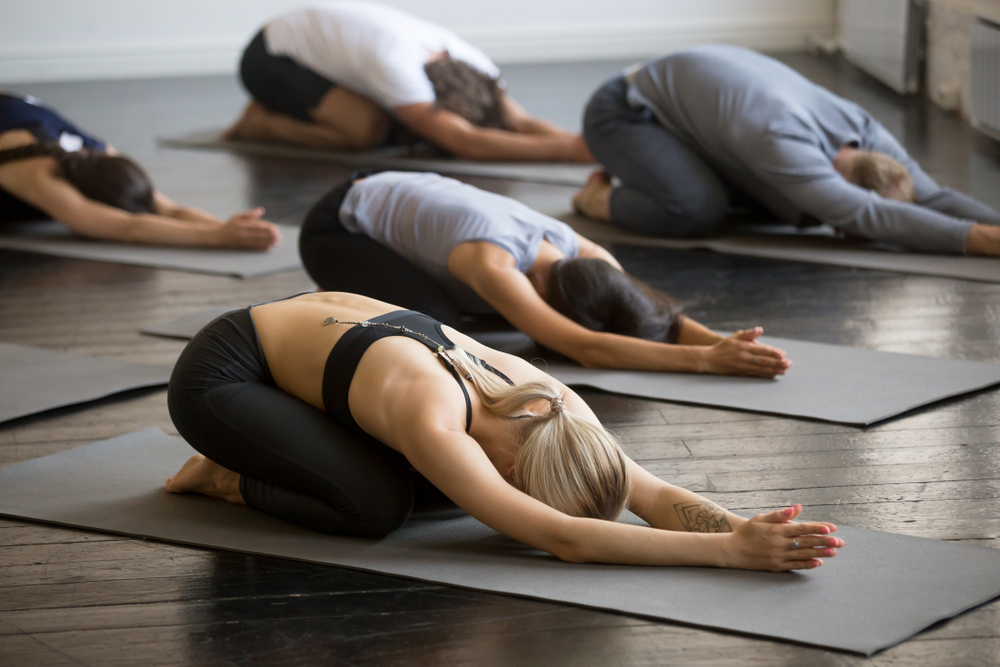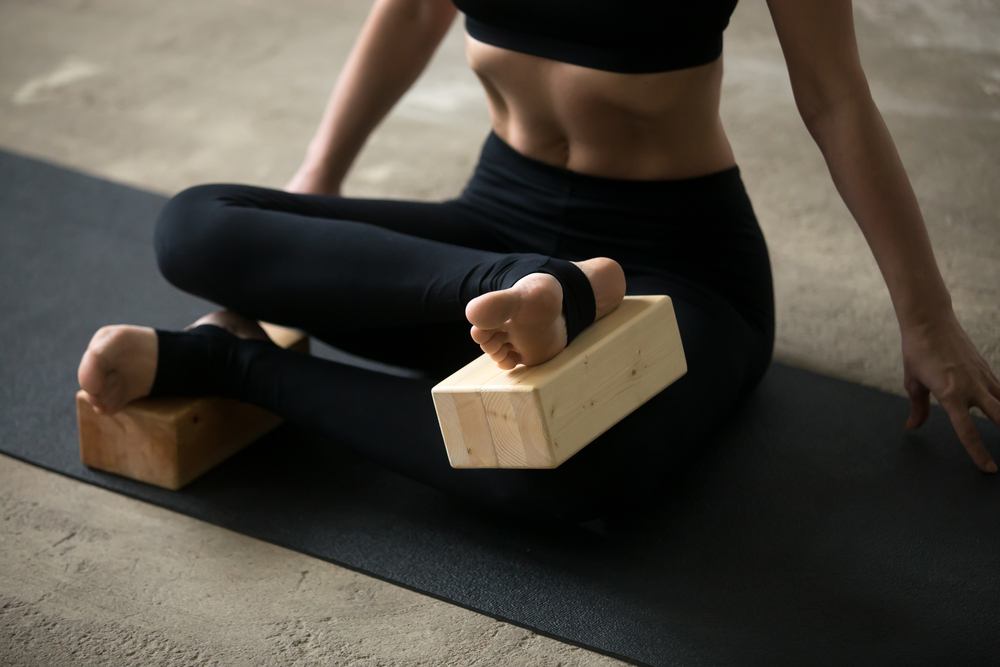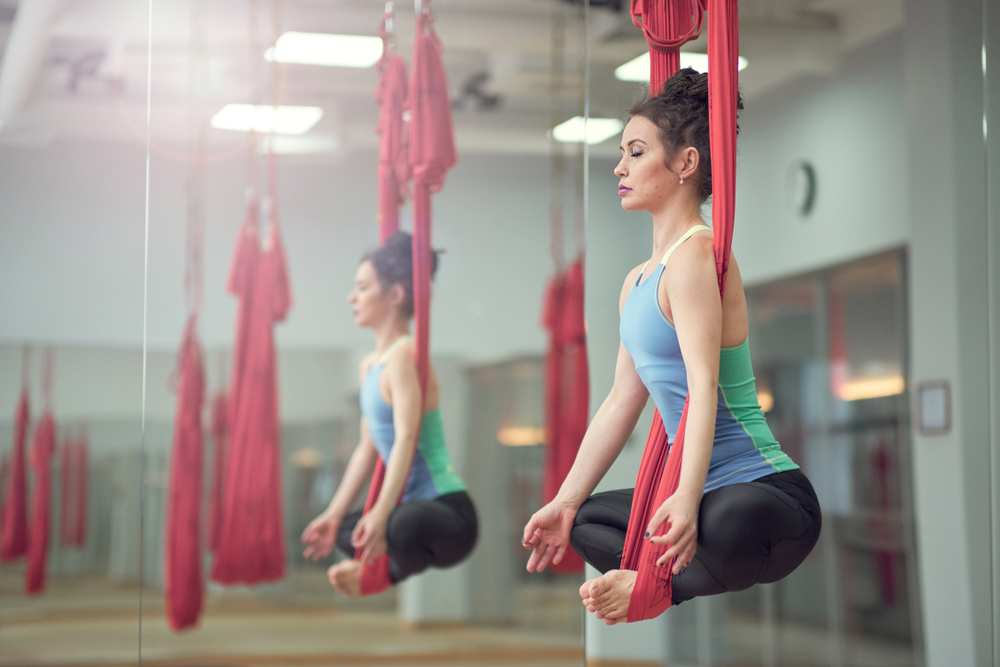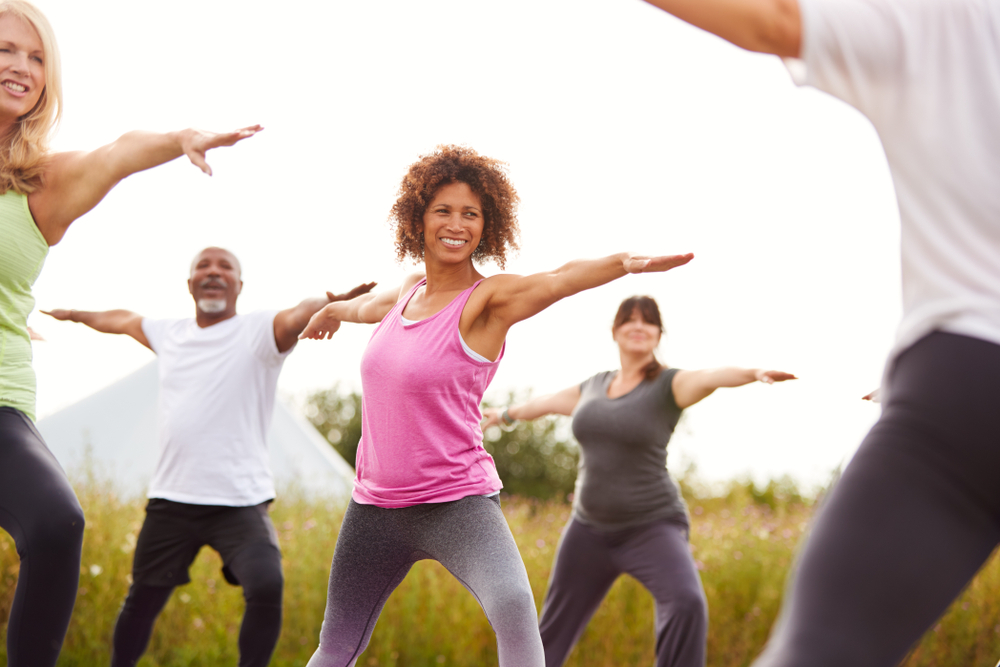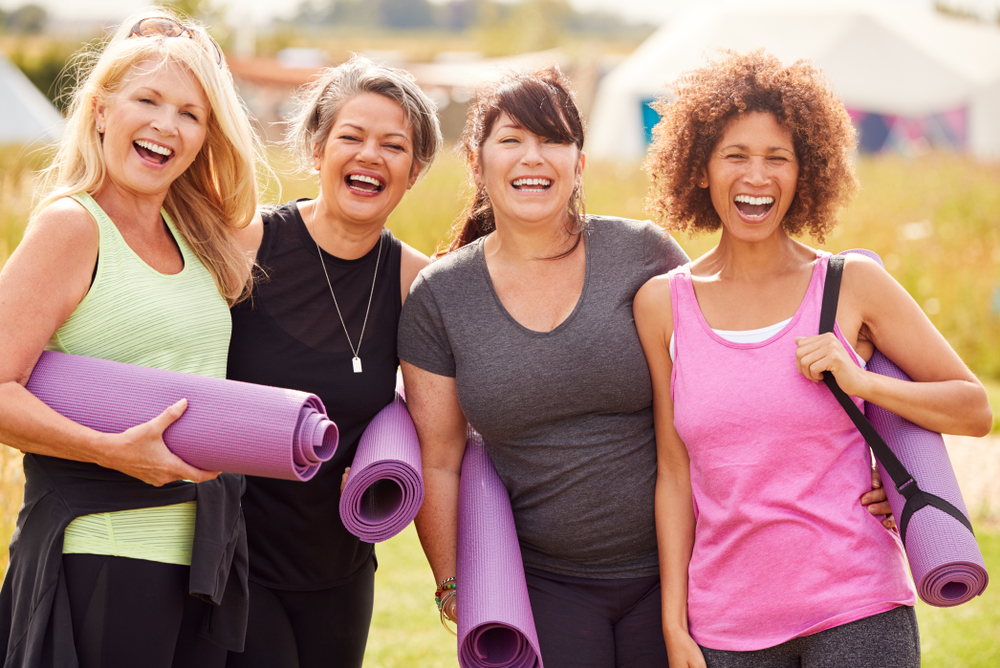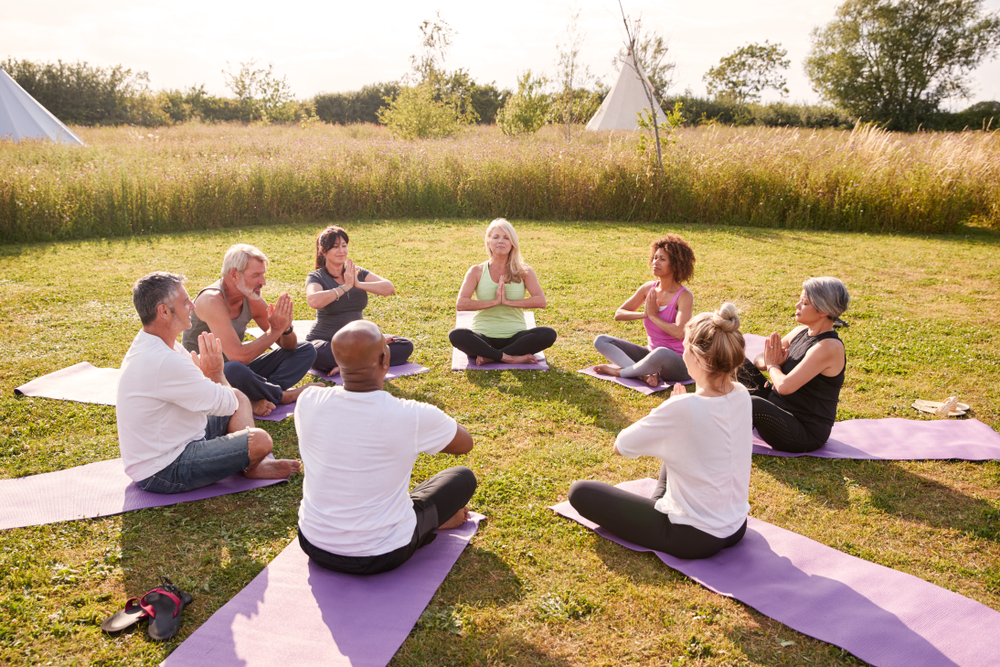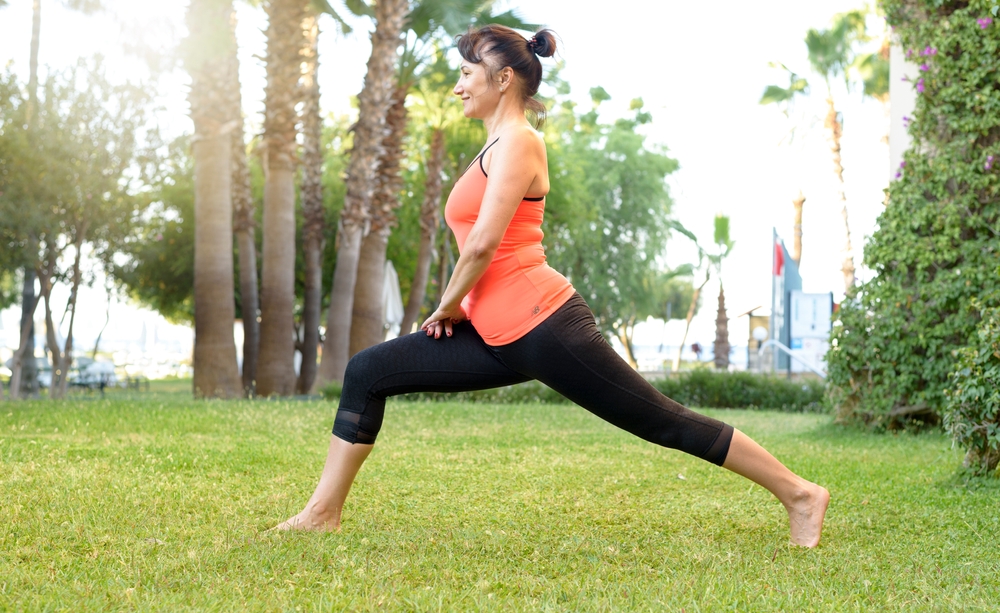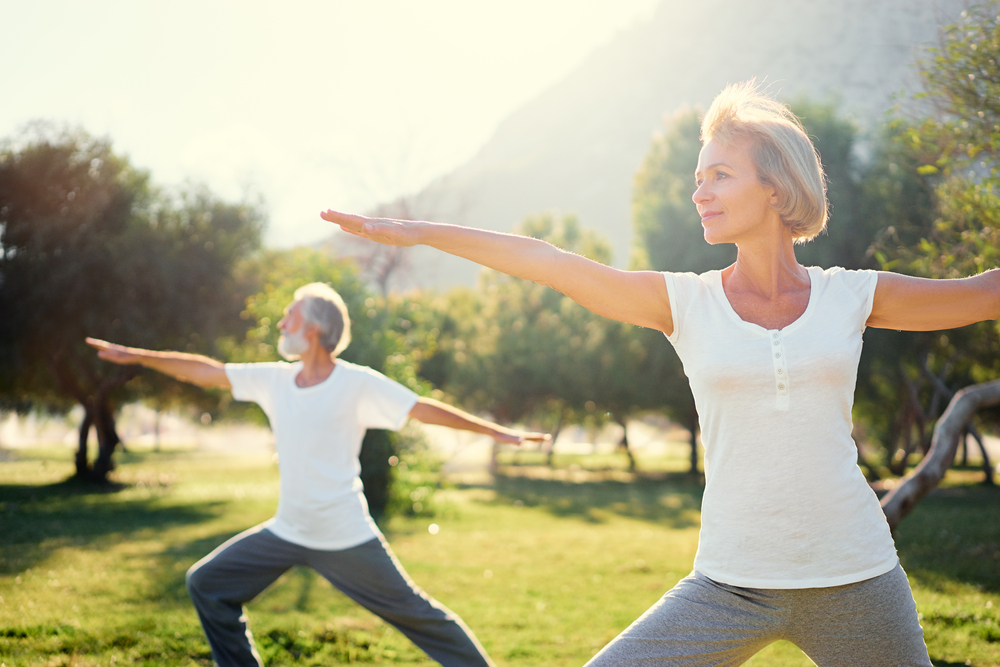Known as sanctuaries of tranquility, retreat centers offer a serene escape from the hustle and bustle of everyday life. Found in idyllic locations like mountains, lush forests, and alongside bodies of water, retreats create a calming ambiance that promotes peace and introspection.
These centers provide an assortment of accommodation options, from modest yet comfortable rooms to more luxurious lodgings complete with top-notch amenities. These varied accommodations ensure a restful stay so that guests can focus on their journey of self-exploration and renewal.
A key element of the retreat experience is their wholesome culinary offerings. Prepared with organic, locally sourced ingredients, meals are mostly vegetarian or vegan-friendly and are as nourishing as they are tasty.
At the heart of these centers are the retreats themselves. They host an array of activities, including yoga, meditation, mindfulness practices, nature walks, creative arts, bodywork therapies, and dedicated wellness workshops. There are both personal and structured group retreats tailored to meet diverse needs. Personal retreats offer the freedom to explore self-paced healing and transformation while structured retreats delve into specific areas of interest. Regardless of the type and theme, each retreat aims to empower participants, facilitate holistic development, and encourage self-discovery and renewal.
Esalen Institute, California

Nestled amidst the wilderness of Big Sur’s mountains, the Esalen Institute is a place where people can explore, transform, and heal. An educational retreat focused on innovative practices, its interest lies in plant medicine, Gestalt, spirituality, and body work. Additionally, the institute explores complex topics such as citizen diplomacy and superhumanism, which makes it a great destination for those in search of knowledge and transformation.
Accommodation
With views of the Pacific coastline and Santa Lucia Mountains, Esalen Institute offers a variety of accommodations, from rustic to luxurious, to suit every guest’s needs and budget.
Among the offerings, the Sleeping Bag Spaces stand out as a great choice for those who are mindful of their budget. Here, guests find themselves closer to the earth, literally sleeping on the floor, and are encouraged to bring along essentials like pillows, pads, blankets, and sleeping bags.
Moving up in comfort, the bunk bed rooms offer guests a slightly more conventional stay. All rooms feature private bathrooms and come with amenities like bed linens, soap, and towels.
The top choice in accommodations is the Price House which comes equipped with a luxurious queen bed and an array of premium features. Guests enjoy tastefully upgraded interiors, modernized bathrooms, a functional kitchenette, and exclusive access to an outdoor space ideal for relaxation.
Dining
Found at core of Esalen, the Lodge serves as a hub for tasty meals and engaging dialogues with fellow guests. All meals are nutrient-rich and carefully prepared using produce from the onsite garden and farm and local suppliers. Guests are offered a selection of gluten-free, meat-inclusive, and vegan options so that every meal can be tailored to their dietary needs.
Retreats and Workshops
The institute’s dynamic class schedule offers a wealth of self-guided exploration opportunities. Changing weakly, it allows guests to delve into mindfulness and meditation, body movements, and nature connections.
The event experience begins with a welcoming opening circle, led by visiting faculty or Esalen staff. Then throughout their time at the Institute, guests find themselves drawn to a variety of activities, such as exploring the principles of Gestalt, practicing Moja yoga, or awakening energy through Pranotthan yoga. The stay concludes with a reflective closing circle which offers a space for introspection and the sharing of insights.
In addition to self-guided exploration, Esalen offers an array of workshops aimed at fostering personal growth and transformation. One such workshop focuses on transpersonal breathwork and invites attendees to explore the practice of qigong and other breathing exercises. Beyond skill acquisition, the workshop features activities such as penning down poetry, mandala drawing, and engaging in integrative Gestalt practice so that guests gain deeper insights into their experiences.
Ancestral plant medicine also features prominently in center’s workshop offerings. Participants engage with the sacred cacao plant medicine in a specially designed ceremonial setting. The purpose of the workshop is to facilitate healing and emotional release, and the cacao serves as a supportive guide throughout the process.
Lastly, the Tibetan sound healing workshop offers participants an immersive introduction to meditative practices using vocalized sounds and breath. This blend of breathwork and vocal resonance promotes relaxation, balance, and a deeper understanding of the self.
Kalani, Pāhoa, HI

On 120 acres of Hawaii’s Big Island, Kalani is positioned between the Pacific Ocean and the lush tropical rainforest. Known as one of the area’s most significant yoga retreats, Kalani operates as a center for wellness services, educational programs, shared living, and sustainable gardening. Its vibrant community of visiting educators and residents offers an array of daily activities ranging from dance classes, art, and yoga to special events, workshops, and transformative retreats.
Accommodation
Accommodation at the retreat center is characterized by an assortment of living arrangements that cater to the varied preferences of its guests. For visitors yearning for solitude amidst nature, the property’s scattered private cottages serve as the ideal choice among other options. These independent buildings, each with its unique artistic design, feature spacious bedrooms with either a king and twin bed or a single king bed. The open-plan cottages also come with full ensuite bathrooms and offer captivating views of either the retreat center’s lush gardens or the ocean.
Another unique housing option is the half lodge, locally referred to as ‘hale’. In this two-story building, individual rooms are private but the lodge itself features shared common spaces such as the open studio space, communal bathrooms, and a lounge and kitchen area. The lodge is conveniently positioned on the retreat center’s main lawn, embraced with gardens with fruit trees and flowers that enhance the ambience of the surroundings.
Dining
Each of the retreat’s private cottages is equipped with a mini fridge for guests’ convenience. Visitors staying at the hale lodge have the benefit of a communal kitchen area for cooking simple dishes. In addition, guests can treat themselves to a variety of local offerings, ice cream, coffee, and snacks available for purchase at the onsite Hale Aloha shop.
For those interested in a broader range of culinary options, there is a plethora of grocery stores, eateries, and farmers’ markets at the town of Pāhoa, located a mere 20-minute drive away.
Retreats
Manifest Your Destiny Retreat
In a nurturing environment of self-care and introspection, the Manifest Your Destiny Retreat encourages participants to let go of burdens, explore their deepest aspirations, and uncover life’s true purpose.
The retreat is built on a blend of breathing exercises, meditation, and yoga, along with personal moments for reflection, art, and journaling. Participants are guided through the 7 steps of manifestation, 7 chakras, and 5 elements so that they can gain a better understanding of their personal ‘dharma,’ or life path.
The program also incorporates authentic movement, shamanic journeys, and personalized yoga therapy, which add texture to the experience and enhance the journey of self-discovery. Additionally, the retreat makes room for guided cultural appreciation excursions which bring a sense of connectedness with the broader community and nature.
Practical Yoga and Meditation Retreat
With positive vibes and a refreshing spirit, the Practical Yoga and Meditation retreat unfolds in a stunning environment. Set against the backdrop of lush greenery, the ocean, and lava formations, the retreat offers participants the opportunity to join daily sessions of yoga and meditation.
Supplementing the daily routine are activities and ceremonies designed to facilitate a deeper personal transformation. Among the highlights is the ‘Writing from the Core’ class where participants master the art of therapeutic journaling to expand self-awareness and foster personal growth.
The retreat also offers plenty of leisure time for participants to take part in Kalani’s culture programs or relax amidst the beauty of nature. The locale’s unique offerings, from visiting turtle nesting habitats and encounters with dolphins to hot springs and black sand beaches, add an extra dimension to the retreat and enrich the overall experience.
Omega Institute, NY

Nestled in the picturesque town of Rhinebeck, the Omega Institute presents a transformative learning experience in a natural retreat setting. With an array of diverse workshops, including Tai Chi, yoga, and meditation, the center invites self-exploration and growth. There are plenty of recreational activities as well, like swimming and boating, strolling along scenic trails, and delighting films and concerts during the evening hours.
Accommodation
Omega Institute offers a variety of accommodations to ensure that every guest finds a comfortable space that aligns with their preferences. Double and single room cabins are available for those seeking privacy and comfort. Complete with a private bath, these rooms come with either a queen bed for pairs or two full-size beds for single occupants. They are equipped with modern amenities such as heating, air conditioning, a ceiling fan, and complimentary Wi-Fi for a connected and comfortable stay.
For a more rustic retreat experience, guests can choose from the double or single tent cabins with a nearby bathhouse for their convenience and comfort. Each of these abodes features a canvas roof, screened windows, wooden walls, and two twin beds.
And for the adventurous spirit, the camping option provides a pre-assigned campsite close to a bathhouse. Guests are invited to bring their own tent and camping gear and immerse themselves in the authentic outdoor atmosphere of the retreat.
Dining
As part of the all-inclusive experience, retreat-goers enjoy three wholesome and scrumptious meals a day. In the comfort of the air-conditioned dining hall, guests are treated to a diverse buffet, primarily composed of vegetarian meals. Gluten-free and vegan options are also included in the spread for specific dietary needs.
Mornings at Omega bring an array of breakfast items such as home fries, tofu scramble, and fresh eggs. Fresh fruit complements the selection while the daily specials bring variety, including options such as frittata, bagels, burritos, and pancakes.
As the day progresses, lunch and dinner menus feature a bountiful salad bar filled with raw vegetables, seeds, and nuts. The offerings are enhanced by homemade non-dairy and dairy dressings. Soup is served to warm the palate, along with a variety of cooked grains and vegetables. The main entrées focus on vegetarian fare such as bean-based proteins, supplemented by egg or cheese options.
Retreats
Omega’s Rest & Rejuvenation Retreats offer a well-rounded experience designed to inspire self-discovery while catering to diverse interests. Central to these retreats are the daily open classes which blend the calming effects of meditation and yoga with the mindful movements of tai chi.
The journey of self-discovery does not stop at the meditation mat, however. It takes guests to a world of wisdom and spiritual exploration at the Ram Dass Library. Here, visitors are encouraged to delve deep into a repository of over 7,000 volumes encompassing holistic living, spirituality, wellness, and more. Meanwhile, the library’s gallery space allows retreat-goers to enjoy the creative expressions of local artists whose works add an extra layer of depth and inspiration to the contemplative atmosphere.
However, it is not just within the quiet corners of the library where guests can find tranquility. Nestled on a hill amidst a grove of trees, the Sanctuary and Yearning Pond allow visitors to reflect, meditate, and experience profound peace.
When guests are ready to move from stillness to motion, the waters of the 80-acre Long Pond Lake await. Participants can indulge in kayaking or canoeing to explore nature up close. Alternatively, they can enjoy a good book in the shade of a leafy tree or join in the communal spirit with playful lawn games.
Omega also recognizes the importance of physical wellness as an integral part of overall wellbeing. This awareness comes to life on the basketball, tennis, and pickleball courts where participants can exercise their bodies, engage in friendly competition, and connect with fellow retreat-goers.
As dusk adorns the sky, the retreat’s rhythm transforms to offer guests more relaxed, yet equally enriching experiences. From Samplers, short workshops presented by Omega’s teachers to the allure of live music, there is a wealth of activities to enjoy. Guests may also cozy up for a movie night, engage in stimulating conversations in the living room, or gather around the bonfire for connection and storytelling.
Each evening event, with its unique flavor, fosters connection, learning, and joy and propels participants further along their path to self-discovery.
Drala Mountain Center, Red Feather Lakes, Colorado

Set in the lofty Colorado Rocky Mountains, the Drala Mountain Center occupies 600 acres of vast alleys, peaceful meadows, and untouched woods in Northern Colorado. Here, a typical day could include calming yoga, body and mind wellness sessions, strolls to the Great Stupa of Dharmakaya, and communal meals with fellow retreat-goers.
To enhance visitors’ stay at this tranquil retreat, the center offers a diverse range of accommodation options. These are designed to cater to various budgets and preferences for social interaction, which adds another layer to the retreat’s appeal.
Accommodation
While the Drala Mountain Center is not your average luxury destination, it offers a unique appeal centered around unpretentious comfort, close-knit community vibes, and connection with nature.
Accommodation options are diverse and thoughtfully designed, from nature-immersed tents to communal dormitories and private lodge rooms equipped with personal bathrooms. The center’s goal is to meet visitors’ essential needs in an environment that radiates cleanliness, safety, and a sense of solace.
Dining
Catering to a spectrum of dietary needs, the Drala Mountain Center offers a trio of menu categories: wheat-free, vegan, and vegetarian. Each meal is designed to have a suitable option for every taste, with certain meals featuring meat selections. To supplement the main courses, a salad bar remains ever ready and filled with non-vegan and vegan protein sources and fresh vegetables. For visitors who wish to grab a snack or a refreshing beverage at any time, the dining area provides a range of offerings such as toast, fruit, coffee, and tea.
Retreats
The Drala Mountain Center offers an array of retreats designed to cater to a range of interests. These retreats include Mindfulness Meditation & Qi Gong, Lojong Mind-Training, and silent meditation, all aimed at nurturing mindfulness, tranquility, and personal growth.
An exemplary retreat, “Quiet Mind, Open Heart”, captures the center’s commitment to holistic well-being. This particular retreat follows a routine that is designed to nurture the mind and body in harmony with nature’s cadence.
The day starts with a heartening breakfast, followed by a blend of yoga, contemplation, and meditation to awaken the senses and kindle inner peace. As midday approaches, participants regroup for a nutritious lunch and prepare for an array of afternoon pursuits. Post-lunch activities include restorative bodywork sessions, hikes in the nearby woods, guided tours of the Stupa, and an opportunity for self-reflection and rest. Following an evening meal, the day winds down with Yoga Nidra and restorative yoga for a deeply relaxing end to the day. This blend of structured activities and personal exploration allows retreat participants to immerse themselves in their experience, foster deeper self-connection, and sync with nature, all at their own pace.
Yogaville, Buckingham, Virginia

Located amidst 750 verdant acres, the Satchidananda Ashram–Yogaville in Virginia is more than just a retreat center. With elements like monastic living quarters, an organic agriculture project, an educational academy, and tranquil spaces for prayer and reflection, the center provides a diverse environment for visitors. Here, you can bring your yoga essentials and enroll in one of the many seasonally-themed retreats or opt for personal or silent retreats. The daily agenda comprises hatha yoga sessions, collective meditations, vegetarian cuisine, exploration of nature trails, and an array of evening activities.
Accommodation
Immersing yourself in the Satchidananda Ashram-Yogaville retreat doesn’t mean you will be sacrificing comfort. There is a range of accommodation options to suit everyone’s needs. You can opt for the Lotus Guest House which offers different room configurations. The six-unit section includes rooms furnished with a refrigerator, private bathroom, and a queen-size bed. The nine-unit area features rooms with a private bathroom and queen-size bed but sans the refrigerator.
For those who appreciate the shared community experience, the dormitory accommodation might be the ideal choice. The two centrally heated and air-conditioned dormitories, Ramalinga Nilayam and Vivekananda Vihar, offer a shared living and bathing arrangement.
And if you’re the adventurous type or just prefer to be closer to nature, you can choose the tenting and camping option. Located in a serene, wooded area near the Lotus Guest Houses, there are twelve campsites available. Essential amenities such as laundry, shower, and bathroom facilities are conveniently located within reach in the nearby Vivekananda Vihar dormitory. Each campsite comes equipped with a sturdy, elevated platform, specifically designed to enhance your outdoor living experience.
Dining
At Yogaville, guests are treated to an array of vegetarian dishes during three daily buffet-style meals served in the morning, noon, and evening. Alongside the warm entrees, a fresh salad bar with a selection of vegetables is always present, many of which are sourced directly from the center’s own farm.
Retreats
Personal retreats offer guests a unique opportunity to experience a variety of activities aimed at self-reflection and spiritual growth. Visitors come from near and far with diverse intentions: some look for a sanctuary of calm and rejuvenation, others aspire to live a yogic way of life, and still others are drawn to delve deep into the philosophy and wisdom of integral yoga.
In addition to catering to these diverse needs, the flexibility of the retreat allows guests to choose a stay that suits them best, whether it’s an extended stay, an overnight visit, or a single day. This provides ample time to dive into the vibrant schedule the ashram offers.
A typical day begins with early morning meditation and moves into Integral Yoga Hatha to harmonize the physical, mental, and spiritual aspects of retreat-goers. Post-session, guests gather for a nutritious breakfast, followed by another round of meditation or an enlightening talk on relevant topics such as the integration of yoga into everyday life. After the midday meal, guests may choose between restorative yoga, a second round of hatha yoga, or a quiet meditation session. On certain days, the schedule also includes scripture study, allowing individuals to delve deeper into the spiritual texts and teachings.
Enhancing the personal retreat experience, the Integral Yoga Sadhana Weekends and Retreats offer additional activities like Kirtan, a form of music and chanting that invigorates the spirit. Participants also have the chance to learn from Swami Satchidananda through Q&A video sessions or allocate their free time to activities such as journaling, hiking, karma yoga, or a well-deserved rest.
There are also silent retreats for a unique and deeply introspective experience. As an integral part of these retreats, hatha yoga practices focus on body purification and revitalization. Tranquil meditation sessions complement these practices and guide attendees towards internal peace and mindfulness. Furthermore, workshops led by experienced instructors deepen visitors’ understanding of yogic lifestyle and philosophy. Opportunities for karma yoga are abundant as well, with guests participating in selfless service at the grounds, farm, and Yogaville kitchen. The retreat experience is further enriched by guided explorations of Virginia’s foothills which deepen the connection with nature and offer a sense of tranquility and serenity.
Mount Madonna Center, Watsonville, California

Nestled within the Santa Cruz mountains, Mount Madonna Center presents a charming blend of open grasslands and redwoods across 380 acres overlooking the Monterey Bay. It offers a gentle invitation to pause the rush, step off the world’s stage, and tune into your inner self amidst the rhythms of nature. Not surprisingly, the center is a sought-after destination for a broad range of activities including corporate, meditation, and yoga retreats, personal practice, and programs designed to foster holistic development, encompassing both the personal and spiritual dimensions.
Accommodation
At Mount Madonna Center, a range of distinctive accommodations awaits guests, from the comfort of guest rooms and the allure of rustic cabins to the homeliness of ram cottages.
Located in the heart of the Conference Center, the guest rooms at Mount Madonna echo the elegance of a boutique hotel. Guests staying here can enjoy modern amenities such as Wi-Fi, with several rooms boasting the added luxury of ensuite bathrooms. Additionally, the area is adorned with charming courtyards that serve as the ideal place to unwind or immerse in a good read. An always-open tea bar, situated in the conference wing, serves an array of aromatic teas.
For those seeking a closer connection with nature, the rustic cabins offer a simple and more secluded experience. Set in the Oaks Campground and a short stroll away from the main area, the cabins feature basic amenities such as electricity and heat. Indoor plumbing and Wi-Fi are absent but a nearby shower house caters to guests’ needs with toilets, dressing rooms, and private showers.
Lastly, guests can opt for the charm of the ram cottages, conveniently located near the Wellness Center and a network of hiking trails. Each cottage offers a different setup which caters to varying needs. Ram 1 is a cozy dwelling equipped with a bathroom, compact kitchen, two bedrooms, and a communal living area that opens out onto an outdoor deck. In contrast, Ram 2 provides more sleeping space and comfortably accommodates up to six people across three rooms, complete with a bathroom and kitchenette for convenience.
Dining
With dedication to mindful eating, Mount Madonna Center takes great pride in serving wholesome vegetarian meals, along with gluten-free alternatives available at each mealtime. Prioritizing the use of organic, locally sourced ingredients, every dish is prepared with health and taste in mind.
The center also ensures continuous access to an assortment of teas, reverse osmosis filtered water, and an array of spreads, rice cakes, homemade bread, and fresh fruit.
As a culinary highlight, the center’s dinner features diverse offerings, ranging from tofu scrambles and hearty lasagnas to vegetable curries. Gluten-free pastas add a familiar comfort food touch for those with dietary restrictions while fresh green salads and a variety of grains contribute to a balanced, nutritious meal. Cheese lovers can usually find cheese served separately, which adds a touch of indulgence to lunch meals.
Retreats
At Mount Madonna Center, retreat experiences are diverse, from personalized getaways for self-exploration to structured, group-focused retreats which offer shared exploration of specific themes. In the personal retreats, guests are welcomed into a holistic environment where they can engage in a variety of offerings at their own pace, including meditation and yoga classes. The retreat also houses a Wellness Center which offers a multitude of therapeutic services, including traditional massages, integrative bodywork, acupressure, biodynamic cranial-sacral therapy, and more. The retreat’s locale, with its vast expanse of meadows and redwood forests, presents ample opportunities for self-reflection and walks or jogs along its picturesque trails.
Alongside personal retreats, the center extends its offerings to encompass specialized group retreats for collective growth. Notably, the Embodying the Goddess retreat is a program that caters to women looking to explore the divine feminine. During the 3-night, 4-day immersion, participants delve into the narratives and spiritual rituals linked to goddesses Lakshmi, Saraswati, Kali, and Durga who symbolize distinct psychological energies and inspire personal growth.
A typical day in this retreat might start with yoga asana and pranayama and continue with a schedule filled with activities such as chakra meditation, discussions on Shakta powers and kundalini energy, and teachings on Goddess Durga and her sacred mantras.
The afternoon presents a combination of free time to explore the surrounding nature or indulge in a massage therapy and experiential learning through earthing exercises and chakra embodiment. Participants are also introduced to the mythology of the Warrior Goddess Kali to enhance their understanding of her transformative power.
The day winds down with an Arti Ceremony and ‘Letting Go’ exercises using Kali‘s breath. The experience is further deepened by a sacred fire ritual that guides participants towards setting intentions and shedding burdens, which makes for a spiritually profound conclusion to the day.
Wrapping Up

Retreat centers serve as perfect spaces to pause, reflect, and rejuvenate amidst serene surroundings. They promise not just a physical journey into scenic landscapes but a deeper, introspective voyage within.
The variety of accommodations, from the simple to the more luxurious, ensures a comfortable stay that complements this personal journey. Food is given equal attention, with delicious and nourishing meals prepared from organic, local produce.
Retreats form the core of these centers and are a dynamic mix of activities. Yoga and meditation sessions, creativity-inducing arts, wellness therapies, nature walks, and focused workshops come together to create a transformative experience. Personal or group-oriented, these retreats cater to a variety of needs, empower guests on their path to self-discovery, and offer a roadmap to a more fulfilled self.








